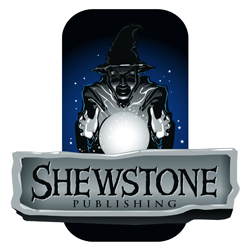In Magonomia® the TTRPG of Renaissance wizardry, everyone plays a wizard. We created five different wizard characters (one for each Science) and used them in examples throughout the core book. You can now download these example characters as part of your Core Rules purchase, or from this link (no purchase necessary).
Over the next several weeks we’ll introduce each of these characters in a blog post, explaining their motivations, skills, and, of course, their magical powers. Since last Thursday was International Transgender Day of Visibility, let’s start with our nonbinary example PC, Gemini!
Gemini in their laboratory. Illustration by Jeff Koch.
Gemini is the detailed example of character creation in Magonomia Core Rules, pages 26-35. They’re an astrologer, a polymath, and a bibliophile. As much as Gemini loves books, they aren’t a recluse: a good character design provides a motivation to get the character out into the world, and Gemini has a big one. Their High Concept is Upwardly Mobile Renaissance Person. Gemini is someone who seeks —and gets— the patronage of powerful people by being smart, charming, and capable. Part of the idea is that Gemini can get missions from current and future patrons, if the GM ever needs an easy story hook. What GM wouldn’t appreciate that?
Gemini is gender fluid, one specific kind of gender nonconformity meaning their gender identity changes over time. Gender identity is not the same thing as gender expression. We chose gender-neutral pronouns and an androgynous look for Gemini, while recognizing that real-world gender fluid people express their gender in a variety of ways.
This character is built on the Visionary archetype (page 50), which falls under the Science of Astrology. Archetypes are optional templates for making a character that fits a particular theme. The Visionary is someone who seeks power as a means to some higher ideal. We didn’t pin down exactly what that higher ideal is, because we didn’t want to give a false impression that Magonomia is supposed to be “about” a certain kind of story. Note that Gemini is a complete character, ready to play, without even deciding on that. In a real Magonomia game, the player would get the opportunity to gradually revise the character’s Aspects over time. It might be best to let the character fit into the world a bit and add that detail when the time is right.
Their best spell is Portent of the Opposing Stars. This is a Divination that describes one of the major obstacles to a specific goal. For example, suppose the character needed a certain rare book of magic (another of their Aspects is You Can Never Have Too Many Books) but the bookseller wouldn’t admit they had a copy for sale. Portent of the Opposing Stars might reveal that the bookseller was being obstructive because the rare book had been stolen! Another possible use might be in searching for the thief: after the first couple of leads run dry, Gemini could cast Portent of the Opposing Stars to discover that the thief is using magic to cover their proverbial tracks.
As you can see, Portent of the Opposing Stars can expose new plot events and really change up the narrative. That’s why that spell costs a Fate Point. The GM is encouraged to make sure Divination spells always reveal some useful information, but they also have a veto power to return the player’s Fate Point if they can’t think of a spoiler-free way to reveal useful information.
Gemini is designed for stories involving investigation and social interaction. Their forte is helping the players deal with the unexpected. Astrology does have some spells that can help in a fight: Discovering Achilles’ Heel is one such example. (If you know who you’re going up against, it can reveal an exploitable weakness.)



